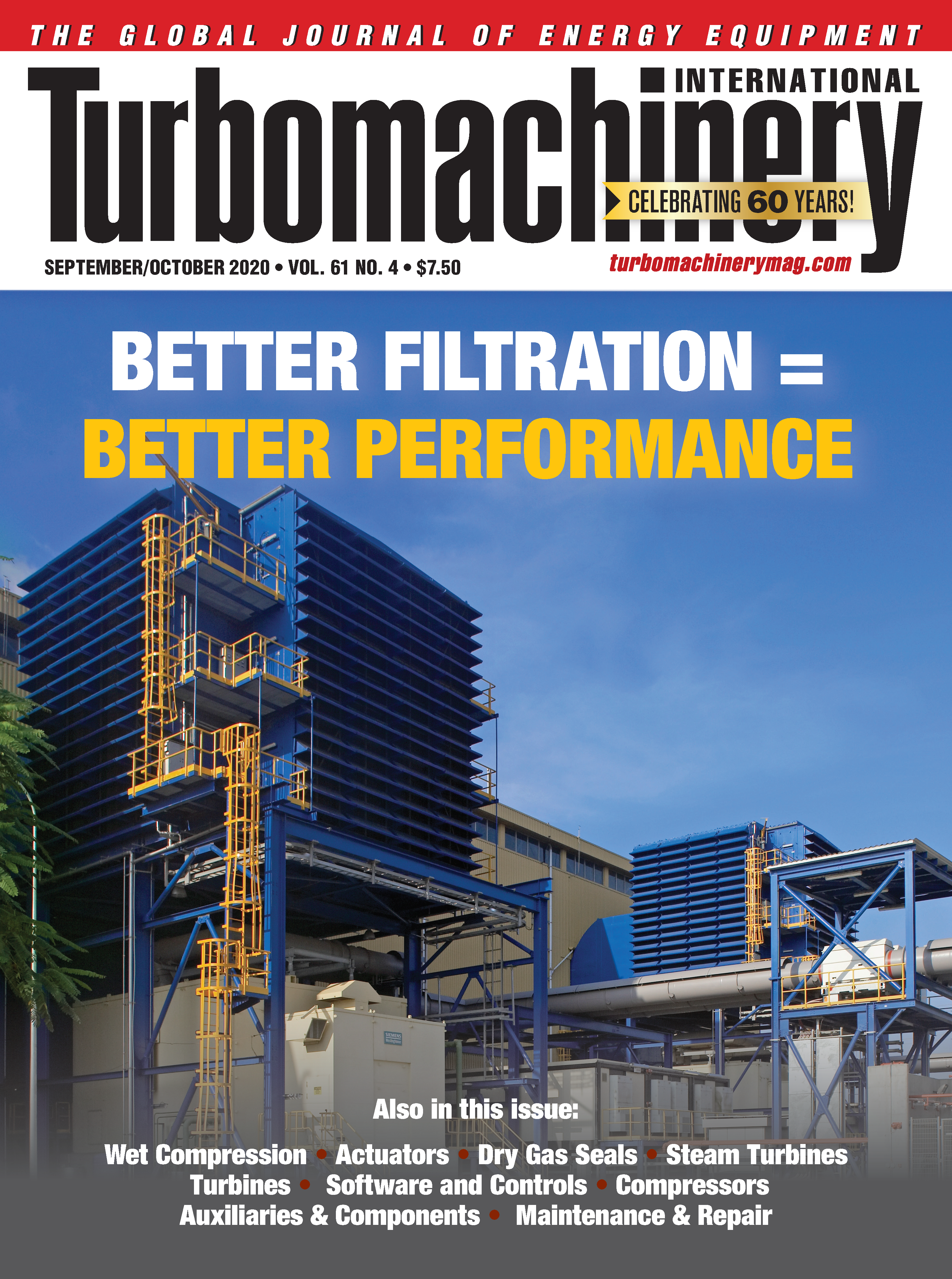Filters, steam turbines, and trade show blues
I just heard the disappointing news that PowerGen International in Orlando in December has been postponed. At times like this, trade publications such as Turbomachinery International are the primary way to reach your peers and your customers. Accordingly, we have stepped up our efforts to assist the industry to make it through these unusual times. Our days are peppered by video chats with OEMs and aftermarket suppliers to discuss industry trends, company news, potential contributed articles and how we can help them to get their message out.
We have established a strong webinar program to provide a forum for companies to communicate important issues and discuss their products and services. These webcasts are attracting large audiences. The Q and A portions at the end always generate far more questions than we can possibly cover.
On the content side, we have beefed up our online presence via newsletters, blogs and LinkedIn posts, and have expanded our print coverage. Which brings us to the current issue.
The cover story concerns gas turbine inlet air filtration. We surveyed the market leaders in this field to find out what is new, what trends are emerging and the different products they offer. They told us about improved filtration technology to deal with challenging environments as well as how the different filter classifications can be used to fit a variety of environments, owner preferences, equipment ages and price points. In the absence of traditional booth visits at trade shows, vendor roundup articles like this offer an opportunity to find out about the latest products and services available.
We took a similar approach to our steam turbine feature, interviewing almost all manufacturers about their available products, features, materials and capabilities. There is far more technical development in this area than many realize. Gas turbine innovation garners most of the headlines. Yet steam turbines have quietly evolved to fit the modern age. These machines remain an essential element of the power industry.
Filling out the book, we have stories covering topics such as:
• Evolution of dry gas seals (DGS): It delves into sealing pressure, temperature range, face contact, leakage and oil migration as some of the challenging areas for DGS technology and how these are now being addressed.
• Wet compression: This article gives perspective drawn from more than twenty years of experience in saturating inlet air with fog and allowing it to enter the compressor to boost performance.
• Controls market rebound: Research from analyst firm ARC Advisory Group predicts that the turbomachinery controls marketplace is set for a swift rebound.
• Compressor train replacement: A petrochemical facility in the Middle East underwent a major upgrade to improve reliability and performance
• Myth Busters: They debunk the idea that gas turbines don’t belong on commercial ships
• Turbo Tips: Should you use pneumatic or hydraulic actuators in turbomachinery?
Trade show blues
PowerGen International has been pushed back from December of 2020 to late March of 2021. For many, it would have been their only chance to visit a trade show over the course of the entire year.
It seems strange that we cannot hold such gatherings yet in many areas we can safely visit the supermarket, grocery store, shopping malls, beaches, restaurants and parks. Surely somebody can figure out how to hold an event complete with social distancing, use of masks and hand sanitizers.
Due to ongoing health concerns, attendance will inevitably be lower – but that just makes it easier to organize. Understandably, many potential attendees and those at highest risk will avoid these shows. But with people cooped up in their houses for half a year, more than a few will want to get out and see the world again. Undoubtedly, some large corporations will forbid employee travel or trade show participation. But there are plenty of vendors desperate to showcase their wares.
With conference centers bleeding money for many months, it shouldn’t be too difficult to convince them to offer deals for expanded spaces. Instead of huge exhibit halls, hold a series of smaller themed exhibits in separate rooms, each with a defined number of attendees controlled by someone at the door (much like in many retail outlets). The same can be done for seminars and sessions. Rather than one session with 200 people, hold 4 versions of the same one over the course of a morning, each with a maximum of 50 (or whatever the permitted number may be). Keynotes can follow the same pattern.
It doesn’t seem impossible to solve. All it needs is someone bold enough to try it. In all likelihood, enough exhibitors and attendees would show up to make it worthwhile. How about it? ■
